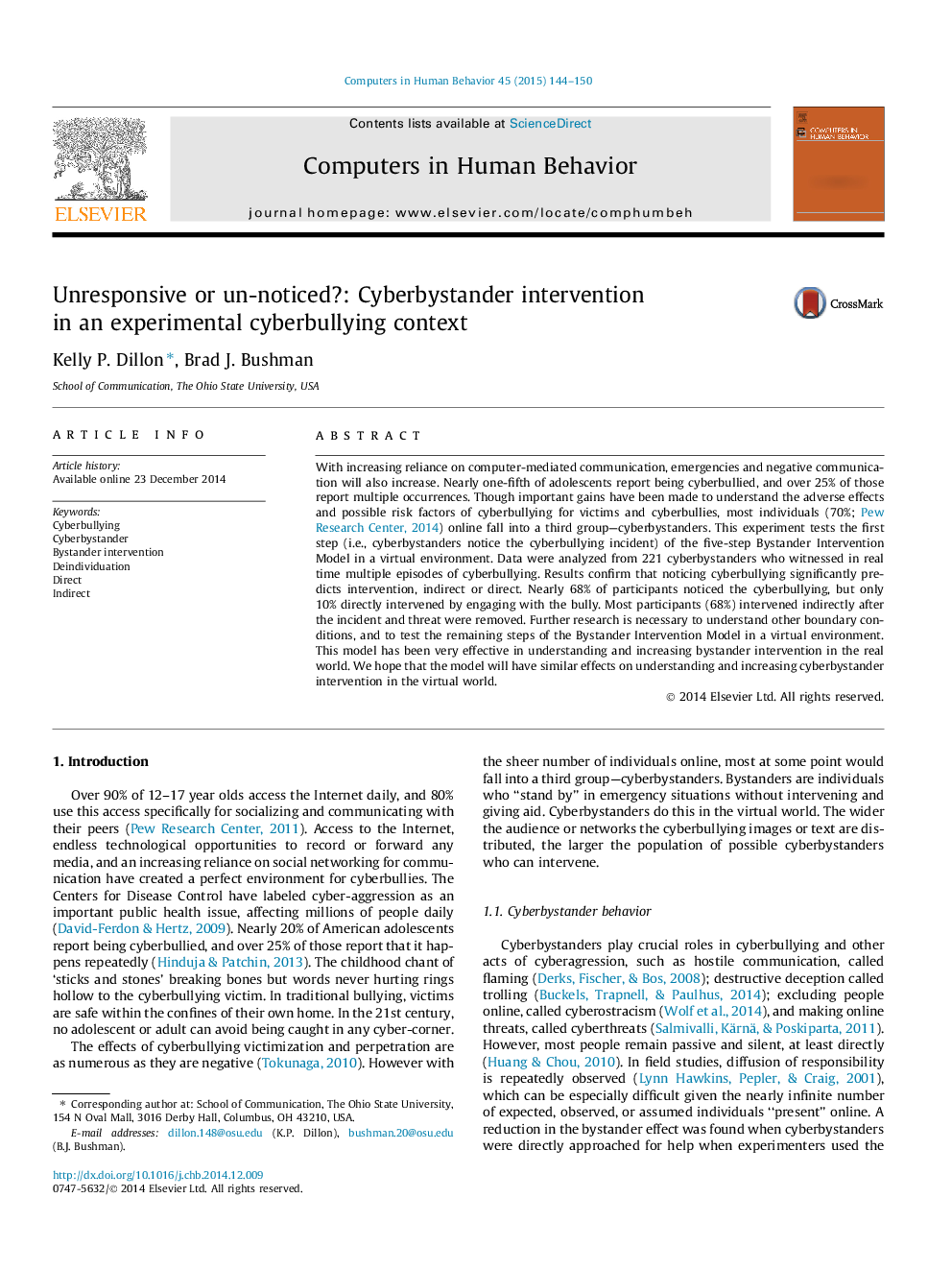| کد مقاله | کد نشریه | سال انتشار | مقاله انگلیسی | نسخه تمام متن |
|---|---|---|---|---|
| 350465 | 618448 | 2015 | 7 صفحه PDF | دانلود رایگان |

• We establish an experimental design to test cyber-bystander behavior.
• Noticing cyberbullying is a predictor of cyber-bystander intervention.
• Various online distractions do not appear to affect cyber-bystander intervention.
• Cyberbystanders intervene indirectly more often than directly in cyberbullying.
• Cyberbystanders choose to intervene directly more often with the cyberbully.
With increasing reliance on computer-mediated communication, emergencies and negative communication will also increase. Nearly one-fifth of adolescents report being cyberbullied, and over 25% of those report multiple occurrences. Though important gains have been made to understand the adverse effects and possible risk factors of cyberbullying for victims and cyberbullies, most individuals (70%; Pew Research Center, 2014) online fall into a third group—cyberbystanders. This experiment tests the first step (i.e., cyberbystanders notice the cyberbullying incident) of the five-step Bystander Intervention Model in a virtual environment. Data were analyzed from 221 cyberbystanders who witnessed in real time multiple episodes of cyberbullying. Results confirm that noticing cyberbullying significantly predicts intervention, indirect or direct. Nearly 68% of participants noticed the cyberbullying, but only 10% directly intervened by engaging with the bully. Most participants (68%) intervened indirectly after the incident and threat were removed. Further research is necessary to understand other boundary conditions, and to test the remaining steps of the Bystander Intervention Model in a virtual environment. This model has been very effective in understanding and increasing bystander intervention in the real world. We hope that the model will have similar effects on understanding and increasing cyberbystander intervention in the virtual world.
Journal: Computers in Human Behavior - Volume 45, April 2015, Pages 144–150